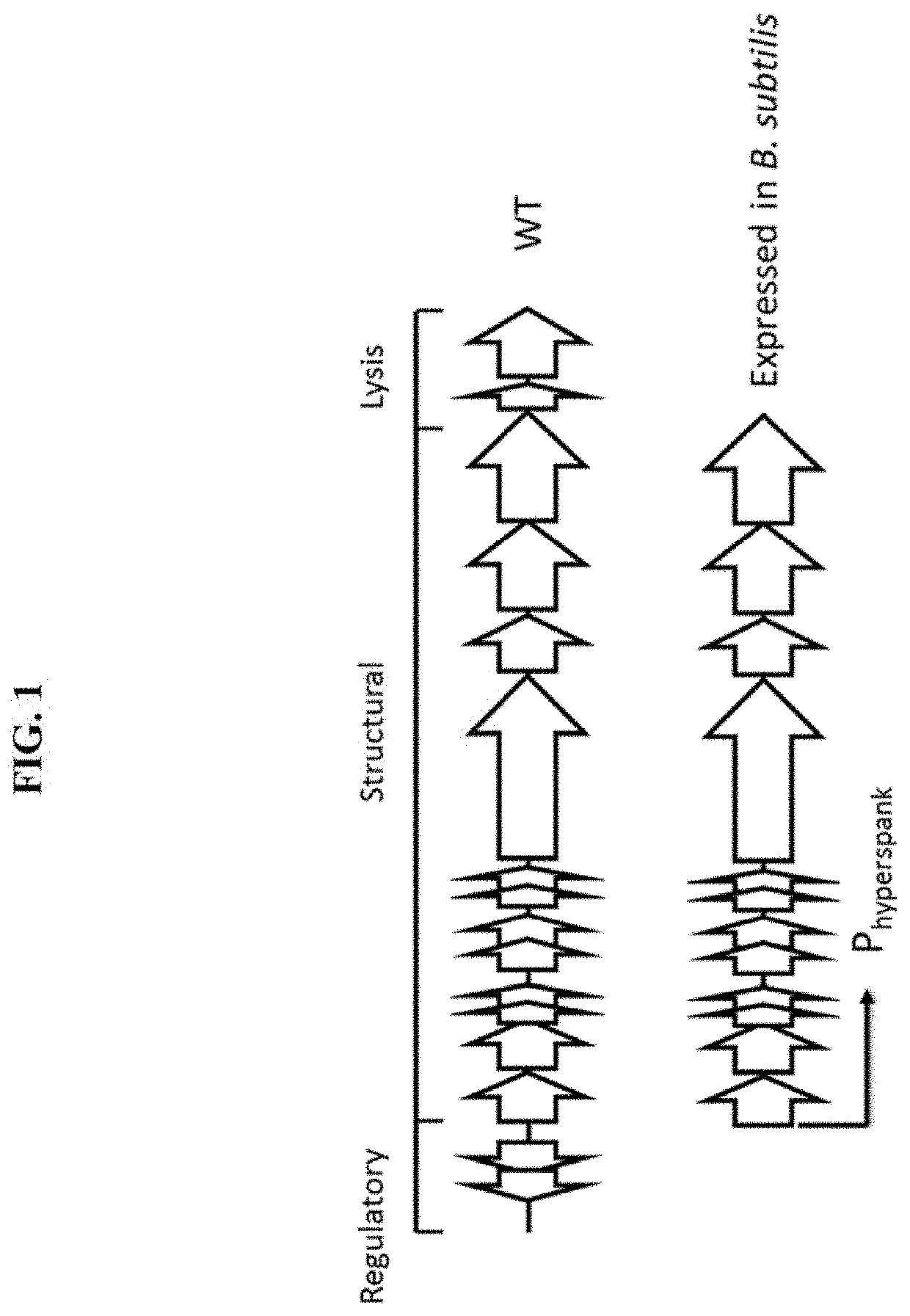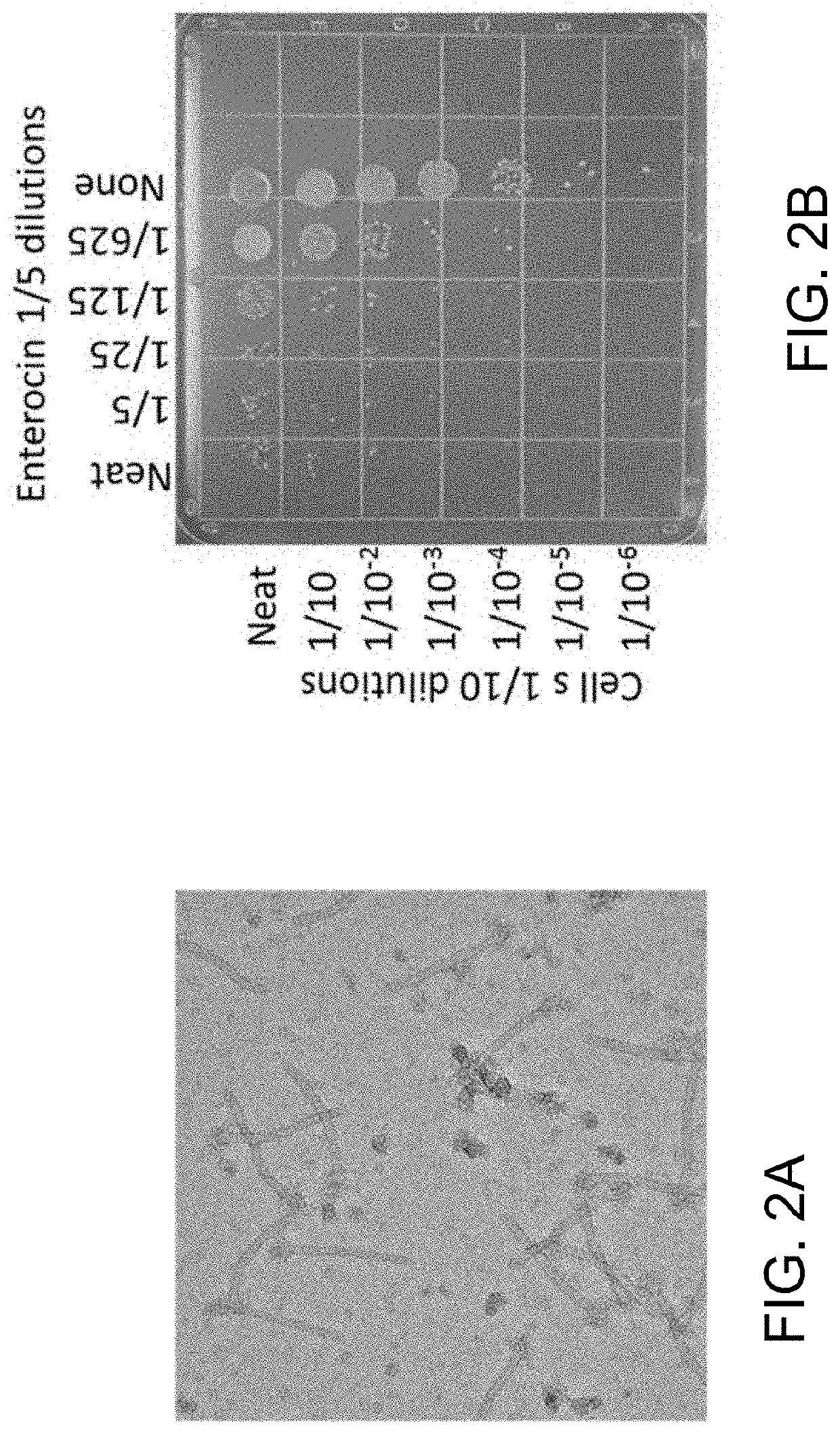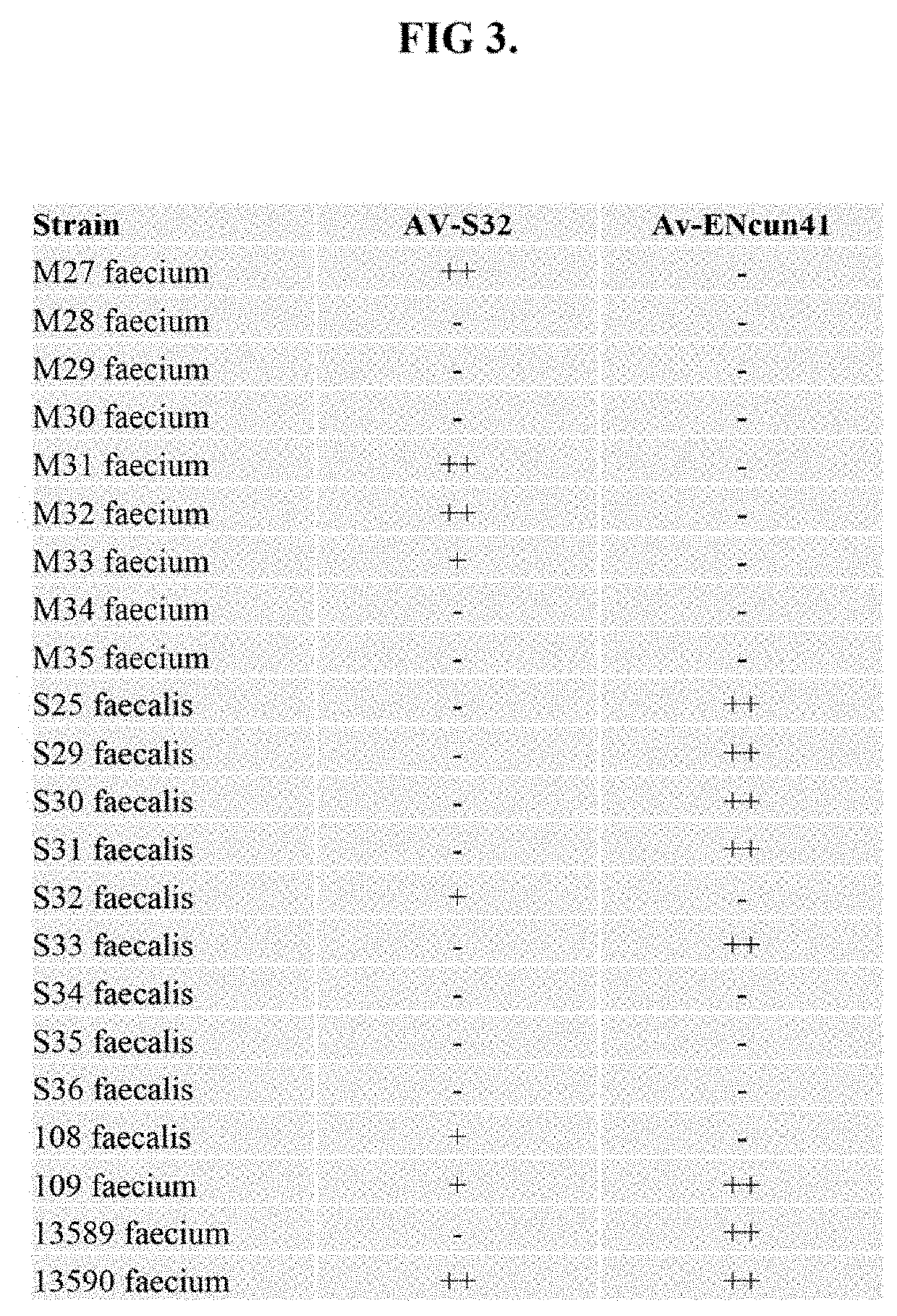Enterocins and methods of using the same
a technology of enterocin and ptlbs, which is applied in the field of entérocins, can solve the problems of difficult use of ptlbs as a last line of defense, limited binding and killing spectrum of ptlbs, and often too narrow bactericidal spectra of ptlbs for practical us
- Summary
- Abstract
- Description
- Claims
- Application Information
AI Technical Summary
Benefits of technology
Problems solved by technology
Method used
Image
Examples
example 1
Cloning and Expression of an Enterocin Gene Cluster
[0112]This example illustrates the identification of a genetic locus (pp2) within a strain of E. faecalis that encodes an enterocin.
[0113]The enterocin gene cluster was previously described as a “prophage” by bioinformatic inspection of the genome sequence of E. faecalis strain V583. See Matos et al. (“Enterococcus faecalis prophage dynamics and contributions to pathogenic traits,” PLoS Genet., 2013, 9(6): e1003539). However, the present inventors identified the existence of very similar gene clusters, pp2-like loci, in many other, if not all, E. faecalis strains, raising the possibility that the pp2 locus was not a prophage.
[0114]To determine whether the pp2- and pp2-like loci encoded a PTLB, E. faecalis isolate S32 was selected as a representative source. SEQ ID NO: 1 is the DNA sequence that encoded the enterocin. The amino acid sequences of the proteins associated with the enterocin locus are shown in SEQ ID NOs: 2-17.
[0115]The ...
example 2
Engineering the Bactericidal Spectrum of Enterocin
[0119]As wild-type enterocin did not have a sufficient broad spectrum within Enterococcus sps. to be a promising therapeutic, experiments were performed to change and / or expand the bactericidal activity to cover diverse clinical isolates of Enterococci. The spectra of PTLBs are determined by their RBP, see Scholl et al. (“Phage tail-like bacteriocins,” Annu. Rev. Virology, 2017, 29: 453-467), so experiments were undertaken to modify the RBP. Whilst some PTLBs contain a “Base Plate Attachment Region” (BPAR; which mediates binding of the RBP to the baseplate) within the RBP itself, the present inventors determined that enterocins, including AV-S32, utilize an adaptor protein (e.g., gene 1290) that contains the BPAR, but which is encoded by a different ORF from the ORF encoding the RBP (e.g., gene 1291). The adaptor protein consisted of two domains, an N-terminal “Base Plate Attachment Region” or BPAR, and a C-terminal region that inter...
example 3
Engineering the Expansion of Enterocin Spectra by Deploying all Phief11 Phages / Prophages
[0125]A comparison of the RBP adaptors from 9 additional phiEF11 phages / prophages was conducted. See FIG. 6. This analysis revealed that the N-terminal BPAR domains of all of these adaptor proteins are conserved; and that the C-terminal RBP-binding domains are highly divergent. These unique observations were consistent with their requirement for attachment of the different RBPs to the phage baseplate via the intermediary conserved N-terminal domain of their cognate RBP adaptor; and to their unique targeting molecule, RBP, via their highly diverse C-terminal domain of the cognate BPAR-containing adaptor proteins. Importantly, it was discovered by the present inventors that the immediate region around amino acid 364 of the RBP adaptors in all of the phiEF11 phages / prophages was identical. This thereby will enable the generation of many hybrid enterocins, with different and distinct binding and kill...
PUM
| Property | Measurement | Unit |
|---|---|---|
| temperature | aaaaa | aaaaa |
| temperature | aaaaa | aaaaa |
| temperatures | aaaaa | aaaaa |
Abstract
Description
Claims
Application Information
 Login to View More
Login to View More - R&D
- Intellectual Property
- Life Sciences
- Materials
- Tech Scout
- Unparalleled Data Quality
- Higher Quality Content
- 60% Fewer Hallucinations
Browse by: Latest US Patents, China's latest patents, Technical Efficacy Thesaurus, Application Domain, Technology Topic, Popular Technical Reports.
© 2025 PatSnap. All rights reserved.Legal|Privacy policy|Modern Slavery Act Transparency Statement|Sitemap|About US| Contact US: help@patsnap.com



